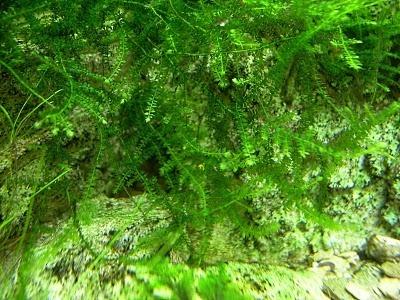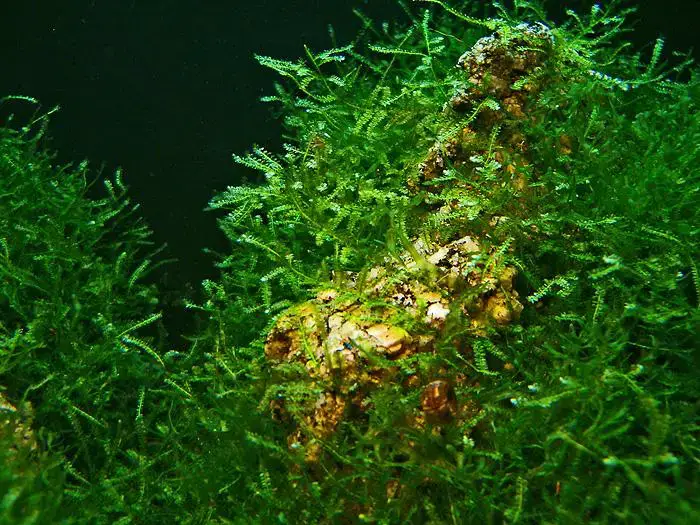
Java_Moss_1.4_lb_6669_copy__12915.1569182629__55617.1584492932.jpg from: https://www.modernaquarium.com/java-moss-vesicularia-dubyana-4-oz-cup/
Introduction
In the vast and captivating world of bryophytes, one particular moss species stands out for its unique charm and ecological significance – the Vesicularia galerulata (Duby) Broth., commonly known as Vesicularia. This unassuming yet fascinating member of the Hypnaceae family has captured the hearts of moss enthusiasts worldwide, offering a delightful glimpse into the intricate tapestry of nature’s smallest wonders.
Background
Before delving into the intricacies of Vesicularia galerulata, it’s essential to understand the broader context of bryophytes. These remarkable plants, which include mosses, liverworts, and hornworts, are among the oldest and most resilient life forms on our planet. They play a crucial role in various ecosystems, acting as pioneers in colonizing new environments and contributing to soil formation and water retention.
Main Content
Morphology and Identification
Vesicularia galerulata is a pleurocarpous moss, meaning its stems grow horizontally along the substrate. Its delicate, feathery appearance is a result of the densely arranged leaves that spiral around the stem. These leaves are ovate-lanceolate in shape, with a distinctive acuminate (tapering to a long, slender point) apex. The costa (midrib) of the leaves is short and double, adding to the species’ unique character.
One of the most striking features of Vesicularia galerulata is its ability to produce gemmae, which are specialized reproductive structures that aid in vegetative propagation. These tiny, green, and spherical bodies develop in clusters along the stem, allowing the moss to spread and colonize new areas with ease.
Global Distribution and Habitat
Vesicularia galerulata is a cosmopolitan species, found on every continent except Antarctica. It thrives in a wide range of habitats, from moist and shaded areas to exposed rock surfaces and even urban environments. This moss is particularly fond of calcareous substrates, such as limestone and concrete, where it forms dense, velvety mats.
In many regions, Vesicularia galerulata is considered a pioneer species, being one of the first to colonize disturbed or newly exposed areas. Its ability to tolerate a variety of environmental conditions, including pollution and drought, makes it a resilient and adaptable species.
Ecological Roles and Adaptations
Despite its diminutive size, Vesicularia galerulata plays a vital role in various ecosystems. As a primary producer, it contributes to the overall productivity of its habitat, providing food and shelter for a diverse array of microscopic organisms.
One of the most remarkable adaptations of Vesicularia galerulata is its ability to withstand desiccation. During periods of drought, the moss can enter a state of dormancy, curling up its leaves and reducing its metabolic activity to a minimum. Once moisture returns, it quickly revives, showcasing its incredible resilience.
Additionally, Vesicularia galerulata is known for its ability to accumulate heavy metals and other pollutants from the environment, making it a valuable bioindicator for monitoring air quality and environmental health.
Case Studies/Examples
In urban areas, Vesicularia galerulata has proven to be a valuable ally in the fight against air pollution. Its ability to absorb and accumulate pollutants has led to its use as a biomonitor in cities around the world. For instance, a study conducted in Mexico City revealed that Vesicularia galerulata samples collected from different locations within the city showed varying levels of heavy metal accumulation, reflecting the varying degrees of air pollution in those areas.
Technical Table

61ov95Xb5rL.jpg from: https://www.desertcart.ae/products/37959778-greenpro-dwarf-baby-tears-hemianthus-callitrichoides-cuba-potted-java-moss-live-aquatic-plants-for-aquarium-freshwater-fish-tank
Conclusion
Vesicularia galerulata (Duby) Broth., the unassuming yet remarkable Vesicularia moss, is a true testament to the resilience and adaptability of bryophytes. From its delicate feathery appearance to its ability to withstand harsh environmental conditions, this species continues to captivate moss enthusiasts and researchers alike. As we delve deeper into the world of bryophytes, we are reminded of the intricate tapestry of life that surrounds us, even in the smallest and most unassuming forms.
Leave us with a thought-provoking question: In a world where urbanization and environmental degradation are on the rise, how can we better appreciate and protect the vital roles played by these often-overlooked organisms?

Vesicularia-dubyana-Singapore-Moss-pot.jpg from: https://www.oceanoblu.com/piante/4545-Vesicularia-dubyana-Singapore-Moss-pot.html
imagegen.ashx from: https://tropica.com/en/plants/plantdetails/Vesiculariadubyana’Christmas'(003APOR)/4395





